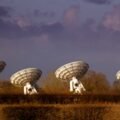Humanity has long focused on the moon’s impact on the Earth, but now Indian researchers have gazed in the opposite direction to discover how COVID-19 lockdowns led to a frostier lunar climate.
From the known impact on the tides to the folklore about ‘full moons’ and human behavior, Earth and the moon affect one another, both in fact and in fancy. While scientists have already studied the impact of the 2020’s lockdown on Earth’s climate in depth, the Physical Research Laboratory team has focused on Earth’s nearest neighbor.
The Moon’s Earth-Driven Nocturnal Climate
With climate change a pressing concern for scientists, Covid lockdowns have proven to be a fertile ground for studying human impact on the environment. This period offers an opportunity to examine how decreasing emissions would impact the climate with real-world data. Outside of the terrestrial climate research related to the lockdowns, existing research illustrates the impact of earthshine, the radiation coming off of the planet, on the lunar surface. By combining the two, the team hoped to discover new information about Earth’s climate by studying the planet’s radiation budget and its impact on lunar climate.
Due to its thin atmosphere, the moon exhibits even more extreme diurnal temperature variation than Earth’s deserts. On the equator, heat from the sun can bring the lunar surface up to 250°F (121°C) while it plummets to -208°F (-133°C) in darkness. Without the ability to reflect or trap heat like the Earth, the moon is mainly subject to outside forces. As night falls and the sun disappears from view, the only heat source remaining is earthshine.
COVID Era Lunar Temperature Study
The team analyzed a data set of lunar surface temperatures from 6 sites using the Diviner Lunar Radiometer (DLRE) instrument onboard NASA’s Lunar Reconnaissance Orbiter (LRO). They honed in on temperatures recorded at night on the near side of the moon between 2017 and 2023. These sites on the near side were chosen because the moon is tidally locked, meaning the same side always faces the Earth and, therefore, is the primary recipient of earthshine. The sites all feature similar, relatively flat topography. This is important as particularly deep craters on the moon can be significantly colder than higher ground as light and other radiation struggle to penetrate their depths.
During the height of global lockdowns from April to May 2020, they discovered anomalous low temperatures between 2200 and 0400 local time. Temperature ranges were significantly lower than either before or after the lockdown period by roughly 13-16°F (8-10°C). During the same period, daytime temperatures registered little to no deviation from other years. With solar radiation being a much more powerful force than earthshine and active during the day, these results indicate that the overpowering influence of the sun experienced no deviation. This pointed to something occurring on Earth as the culprit for the night time changes.
While the timing seemed remarkable, the team did their due diligence in investigating other potential explanations for the readings. The moon’s latitude experiences a slight wobble of around 3°, but the selected site’s proximity to the equator rendered this largely inconsequential. They also investigated solar weather. While various solar storms and sunspots did occur, these incidents did not correlate to any recorded change in nighttime temperature.
Future Study
This era of commercial spaceflight has reinvigorated interest in establishing permanent moon bases. The team views lunar infrastructure not in its usual framework of a step into the cosmos but as potentially something more reflective. After linking the climate conditions on Earth to temperatures on the moon, they close their paper by noting, “Moon-based observatories can become potential tools for observing Earth’s environmental changes and need to be explored extensively.”
The paper “Effect of COVID-19 global lockdown on our Moon” was published in Monthly Notices of the Royal Astronomical Society on September 18, 2024.
Ryan Whalen covers science and technology for The Debrief. He holds a BA in History and a Master of Library and Information Science with a certificate in Data Science. He can be contacted at ryan@thedebrief.org, and follow him on Twitter @mdntwvlf.

